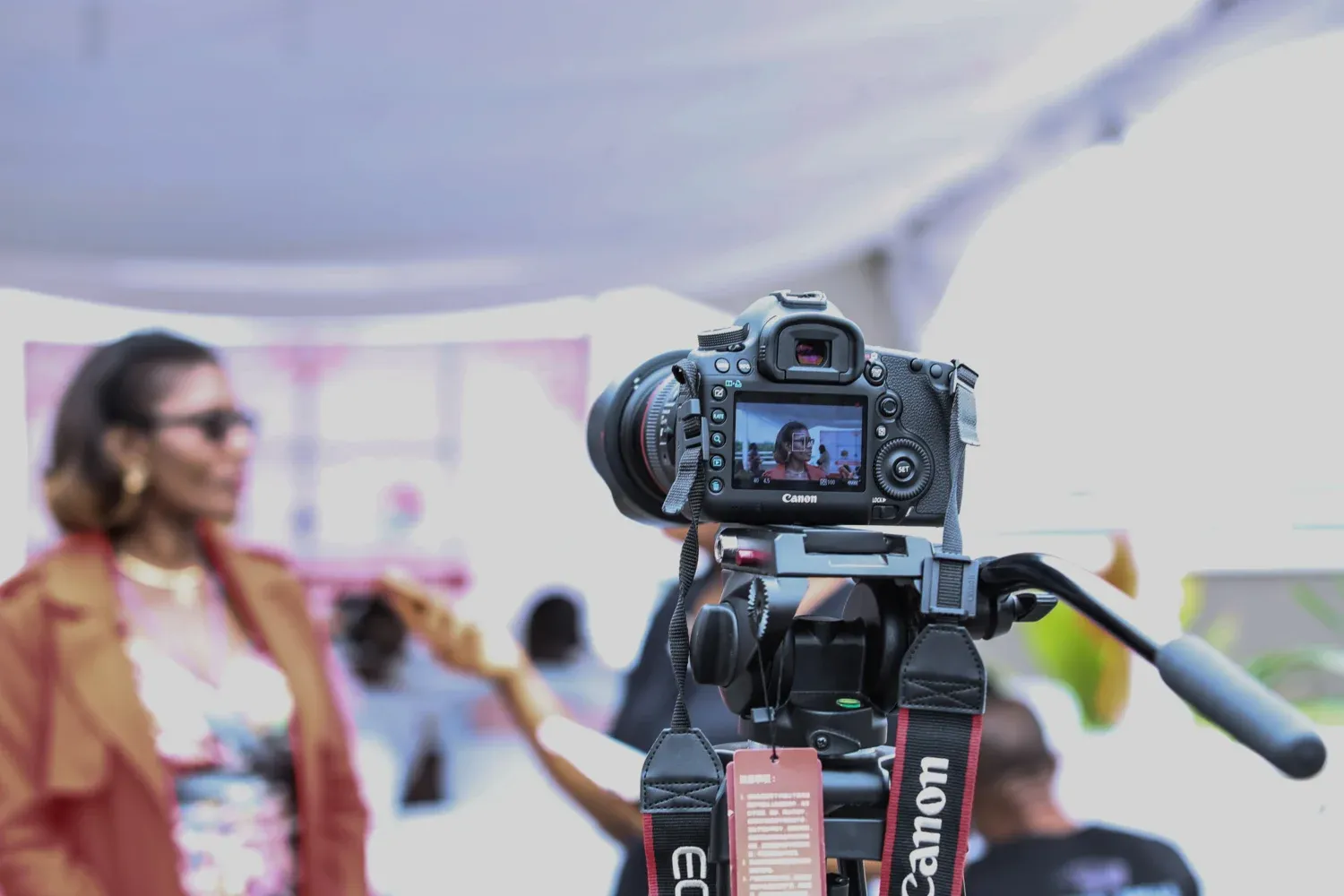Communicating with a wider audience about your research
A common approach for researchers wishing to share ongoing or published research with the public is to contact the Communications and Public Relations Office and request a press release. However, there are other methods that can be just as effective. This page offers some practical tips to help you take the lead in communicating your research to a wider audience.
Before you begin
- Consider who you want to reach with your research news and why. This will influence both the content and choice of communication channels.
- If your news relates to a new scientific study, check with the press office to see whether there is interest in issuing a press release or news tip from KI centrally. You will find information here on how the process works.
- If the press office declines, you can contact the web editor at your department to explore the possibility of publishing the news on KI’s news site. Follow the same approach as when contacting external journalists (see below).
- Coordinate with co-authors, collaborators and the journal (if applicable) to ensure you are aligned on how the communication should be handled.
- Update your profile page on ki.se — it is often the first thing that appears in an online search for your name. If you are a research group leader, make sure the group’s web page on ki.se is also up-to-date, clear and accessible, and visually appealing.
Reaching out via social media

Use personal accounts
When communicating about your research, it is best to use your personal social media accounts, rather than creating new KI accounts for a special project or grouping. Posts from personal accounts generally achieve wider reach and greater engagement than those from organisational accounts. This trend is especially noticeable on LinkedIn.
Posting from your personal account means that you are not representing KI as an organisation and are free to express yourself under the principles of freedom of speech and freedom of communication. You can share exciting new research regardless of its origin and generously offer your insights. This makes it easier to create engaging content, which in turn helps attract more readers and followers.
Create content that resonates with your audience
Start by choosing the right social media platform for your purpose and target audience. If you want to reach fellow researchers, LinkedIn and Bluesky may be ideal. If your aim is to engage teenagers, TikTok might be more suitable.
You only have a few seconds to capture your audience’s attention on social media. When creating a post, focus on what interests your followers. Keep in mind that trends and behaviours shift rapidly on these platforms.
Tips for engaging posts:
- Share something new, unexpected or useful to your followers.
- Highlight an interesting aspect of your latest study.
- Offer a fresh perspective on a current issue or explain something complex in a simple way.
- Instead of simply announcing an award, share your top three tips or insights from the journey.
- Use authentic and personal images to illustrate your posts.
- Acknowledge colleagues, collaborators and funders by tagging them with @ in your posts. Use hashtags (#) sparingly.
Comment and spark dialogue
Avoid using your social media accounts as noticeboards. Social media is designed to foster and maintain social connections — and this behaviour is rewarded by platform algorithms, which will boost the visibility of your posts. Creating dialogue is therefore beneficial.
Always respond to comments you receive. Rather than a simple “thank you”, try to elaborate and initiate a meaningful discussion. Also take the initiative to comment on others’ posts — this helps increase visibility for both their account and your own.
To enhance visibility, consider creating a new original post when sharing content on platforms like LinkedIn, rather than simply clicking the “share” button.
On sharing links
Avoid linking to external websites, as social media platforms are designed to keep users within the platform. Posts containing links tend to receive lower visibility. Try to summarise the key points directly in your post without including a link.
If you do share a link to your publication, avoid copying URLs directly from your browser’s address bar, as they often contain session data that may cause the link to break later. Instead, use persistent links via DOIs or the publisher’s own tools for creating and sharing links whenever possible.
Guidelines for organisational accounts on social media
To set up and manage an account with KI as the sender, formal approval is required from your immediate manager with operational responsibility. This might apply to accounts for your department or research centre. In such cases, it is especially important to review KI’s social media guidelines and carefully consider whether a separate organisational account is truly necessary.
Pitching your research to journalists
Only the Communications and Public Relations Office is authorised to issue press releases on behalf of Karolinska Institutet as an organisation, using the KI logo in the header. However, as an employee of the university, you are of course free to contact journalists directly to talk about your research or other aspects of your work. A simple phone call or email is often enough to share news about ongoing projects or recent findings.

Start by identifying journalists who cover your field in media outlets that reach your intended audience — and who are likely to be interested in your story. One way to stay informed and build relationships is to follow selected journalists on social media. If needed, KI’s press office can also help you identify suitable media and journalists.
Avoid sending mass emails or arranging press conferences — journalists generally prefer exclusive tips on compelling stories. Remember that many science blogs also serve as valuable news channels.
How to do it:
- Journalists want the key points first: What does the study show, and why is it relevant for readers, listeners or viewers?
- A journalist who is interested may begin the interview as soon as you call. Here is some advice to help you prepare for the interview.
- Have your news material ready to send by email straight after the call. If you have already sent an email, refer to it when you phone.
- A news pitch email does not need to be long. Summarise the research in 5–6 sentences: what the study shows, why it matters, background and method. Aim for a level that a person in their late teens could understand. Use the questions in the Comms Office’s research news form for inspiration.
- Write a short, engaging headline that captures the essence of your news. Use this as the subject line of your email.
- Include contact details at the end of the email: name, title, mobile number and email address of the spokesperson. Make sure that you are available!
- Attach the scientific article if relevant. If an embargo applies, be sure to state this clearly (see the fact box below).
- Offer journalists visual material, such as portrait photos or the opportunity to film in the lab. Here are the guidelines for photography on KI premises.
If you are unsure, feel free to consult KI’s press officers.
Embargoed news
Scientific journals often require that information about upcoming studies not be shared publicly before official publication. In such cases, you may share advance information with the KI Press Office and trusted journalists under embargo, clearly stating the date and time when the embargo lifts.
The Press Office always respects journal embargoes. If you contact a journalist outside KI, it is essential to ensure they understand what an embargo entails and are willing to accept information under those terms. This must be confirmed before sharing unpublished results.
Note that information already publicly available online — such as preprints — cannot be subject to embargo. Contact the Press Office if you are unsure about the rules.
Even when publishing on ki.se, journal embargoes must be respected. Always inform your department’s web editor of the exact date and time the embargo lifts.
Pitch your research to KI’s popular science channels
If you already have been in touch with the KI Press Office, there is a good chance that the editors of KI’s popular science channels have also received the information. However, you are always welcome to reach out directly. These channels primarily target a medically interested general public, but they also reach KI staff, alumni and journalists.
Medicinsk Vetenskap is Karolinska Institutet’s own popular science magazine, featuring everything from short news items and interviews to in-depth long reads. The magazine is published in Swedish four times a year and is available at well-stocked newsagents across Sweden. A digital version is also available, and selected articles from each issue are published on KI’s news site.
In the Medicinvetarna podcast, KI researchers are interviewed on topics of broad public interest across the life sciences. The language is usually Swedish, though some episodes are recorded in English. A new episode is released every week, and the podcast is one of Sweden’s most popular in the medical field, with 8,000–10,000 downloads per week.
KI is a member of the international news platform The Conversation, which allows other media outlets to republish articles under a Creative Commons licence. What sets this platform apart is that articles are written by researchers themselves, within their area of expertise. A team of professional editors helps adapt the content for a general audience. The Conversation also offers training for researchers who want to improve their popular science writing. The primary language is English, though The Conversation also has editions in Spanish, French, and Indonesian.
Medicinvetaren is a popular science newsletter published every other week during term time. It highlights previously published news, podcast episodes and feature articles from KI’s other channels. Public events hosted by KI can also be promoted through this channel. Medicinvetaren is published in Swedish, with a summary in English.
Reach the public through events

Popular science lectures, webinars and fairs are excellent ways to reach a diverse audience — including policymakers, teachers, healthcare professionals, patient groups and the medically curious public. To save time and effort, you can sign up for events organised by others. If you are hosting your own event, it can be beneficial to align with a larger initiative to gain promotional support.
In Sweden, the non-profit organisation Public & Science (Vetenskap & Allmänhet) arranges various public engagement activities. Museums, publishers, adult education associations (Studieförbund in Swedish), and patient organisations may also offer opportunities for public engagement. If your goal is to reach Swedish politicians and decision-makers, the annual Almedalen Week in Visby, Gotland, is a key. The Gothenburg Book Fair also features a dedicated popular science stage called Forskartorget (Researchers' square). Internationally, the AAAS Annual Meeting is a major gathering for researchers, journalists and the public.
A more advanced way to engage with the public is to integrate public events into a research project through so-called citizen science. Find out more on the website EU Citizen Science. There is also a Swedish website called medborgarforskning.se.
Examples of events involving KI
The Cell is the Hagastaden node of the Swedish National Museum of Science and Technology, with KI as a knowledge partner. In addition to art exhibitions, The Cell offers lectures, discussion evenings and children’s activities. Language: Swedish and English
KI contact: Sabina Bossi
The Swedish version of the European Researchers’ Night initiative is called ForskarFredag and takes place on the last Friday of September. It targets young people, especially upper secondary school students (gymnasiet in Sweden). KI participates with lectures and activities at Vetenskapens Hus in AlbaNova. Language: Preferably Swedish, but English may be used in some cases.
KI contact: Sabina Giulini
Borrow a researcher (Låna en forskare in Swedish) is a spin-off of ForskarFredag, Sweden's version of Researchers' Night. This initiative targets schools, workplaces and non-profit organisations. Sign up to be “borrowed” for a few hours to talk about your area of expertise. Language: Preferably Swedish, but English may be used in some cases.
KI contact: Sabina Giulini
In Researchers' Grand Prix (Forskar Grand Prix in Swedish), researchers compete by presenting their research in four minutes in the most engaging and accessible way possible. Competitors come from various Swedish universities. A presentation skills course is included for all participants. Language: Preferably Swedish, but English is also accepted.
KI contact: Sabina Giulini
Nobel Calling Stockholm is a science festival organised by the Nobel Prize Museum in collaboration with Stockholm universities. It takes place during the first week of October, when the new Nobel Prize laureates are announced. If you are planning a public event, this is an ideal time to schedule it and link it to Nobel Calling for added visibility. Language: Preferably Swedish, but English may be used in some cases.
KI contact: Therese Husén
Start your own blog or podcast?
If you want more creative freedom than platforms like LinkedIn or Facebook allow, starting a blog or podcast could be an option. However, building and maintaining an audience requires significant time and effort. This is best suited for those with a strong passion for a topic that appeals to a broader public. As with social media, the KI Comms Office recommends using personal channels.
There are many websites offering guidance on how to start a blog or podcast – just search online. You can also get tips and support from AI tools like Copilot and ChatGPT.
Recommended reading: Nature — Why science blogging still matters
